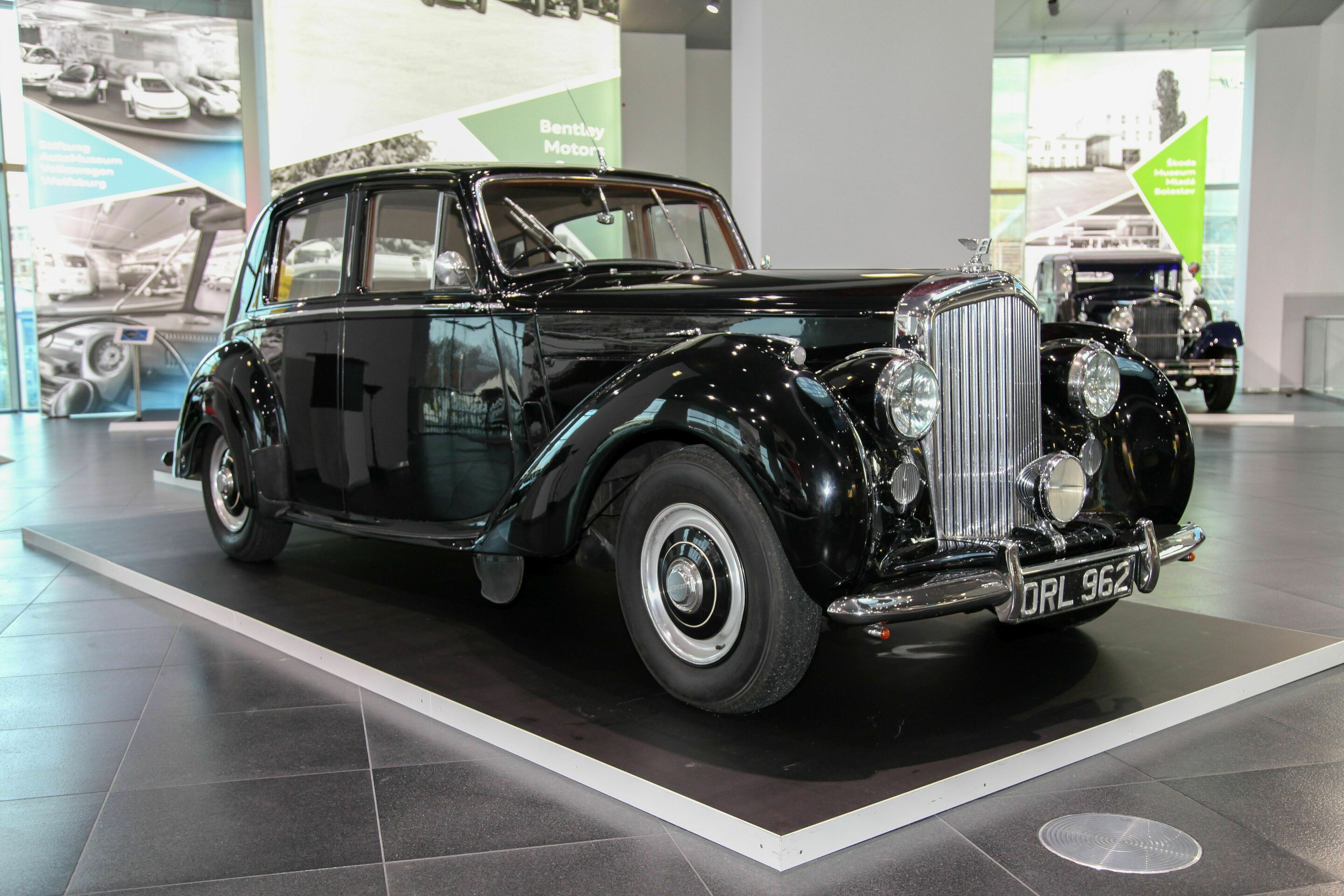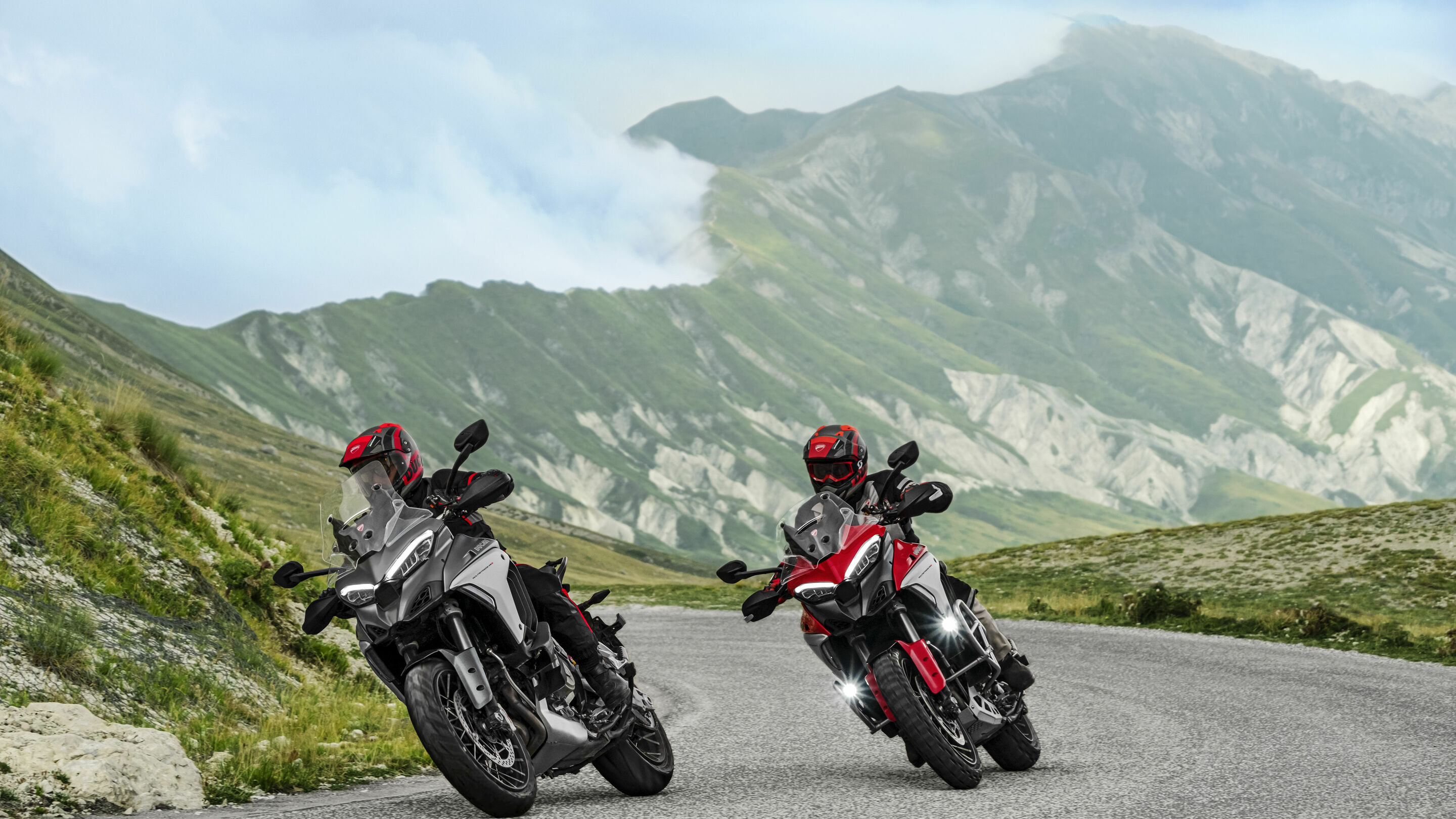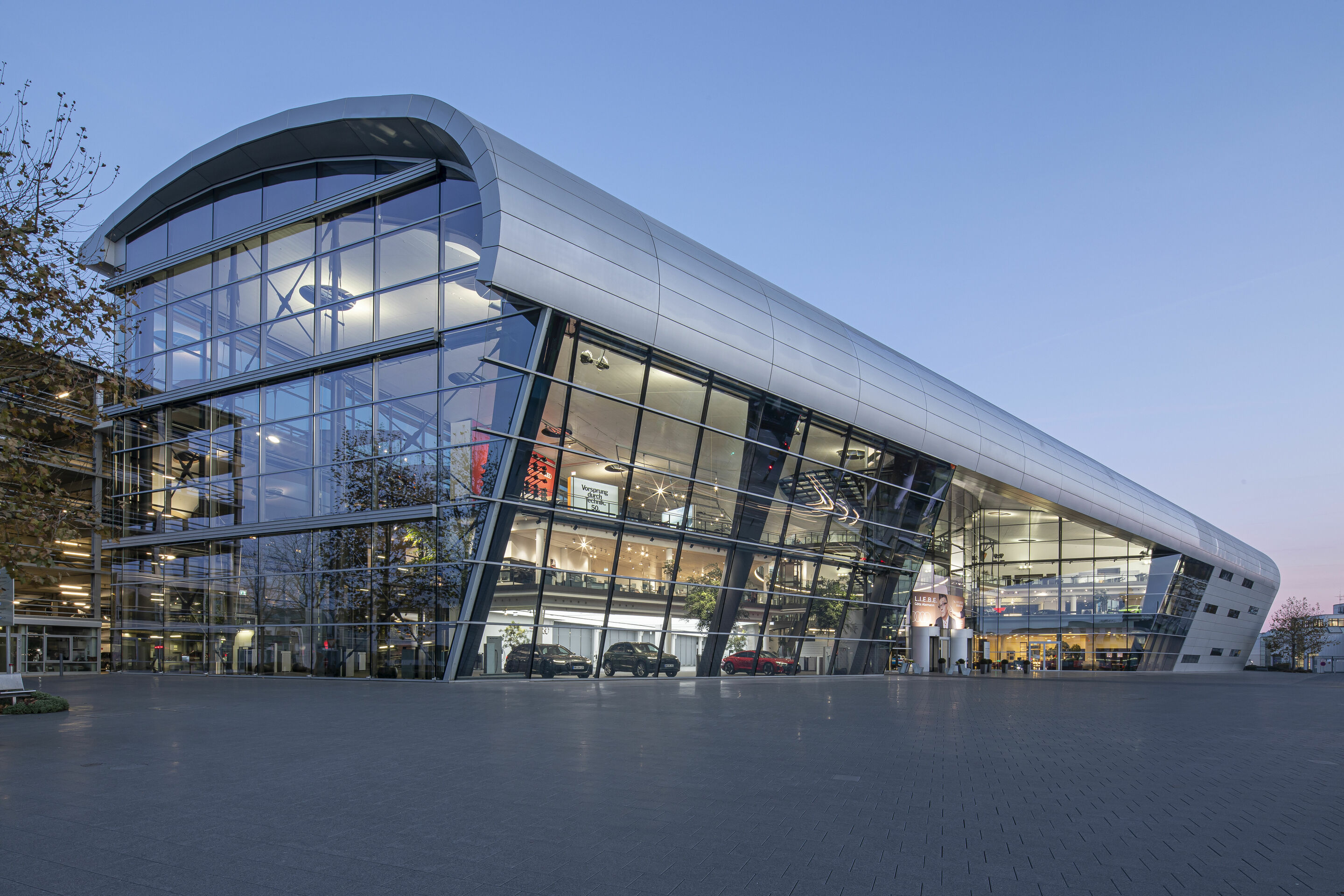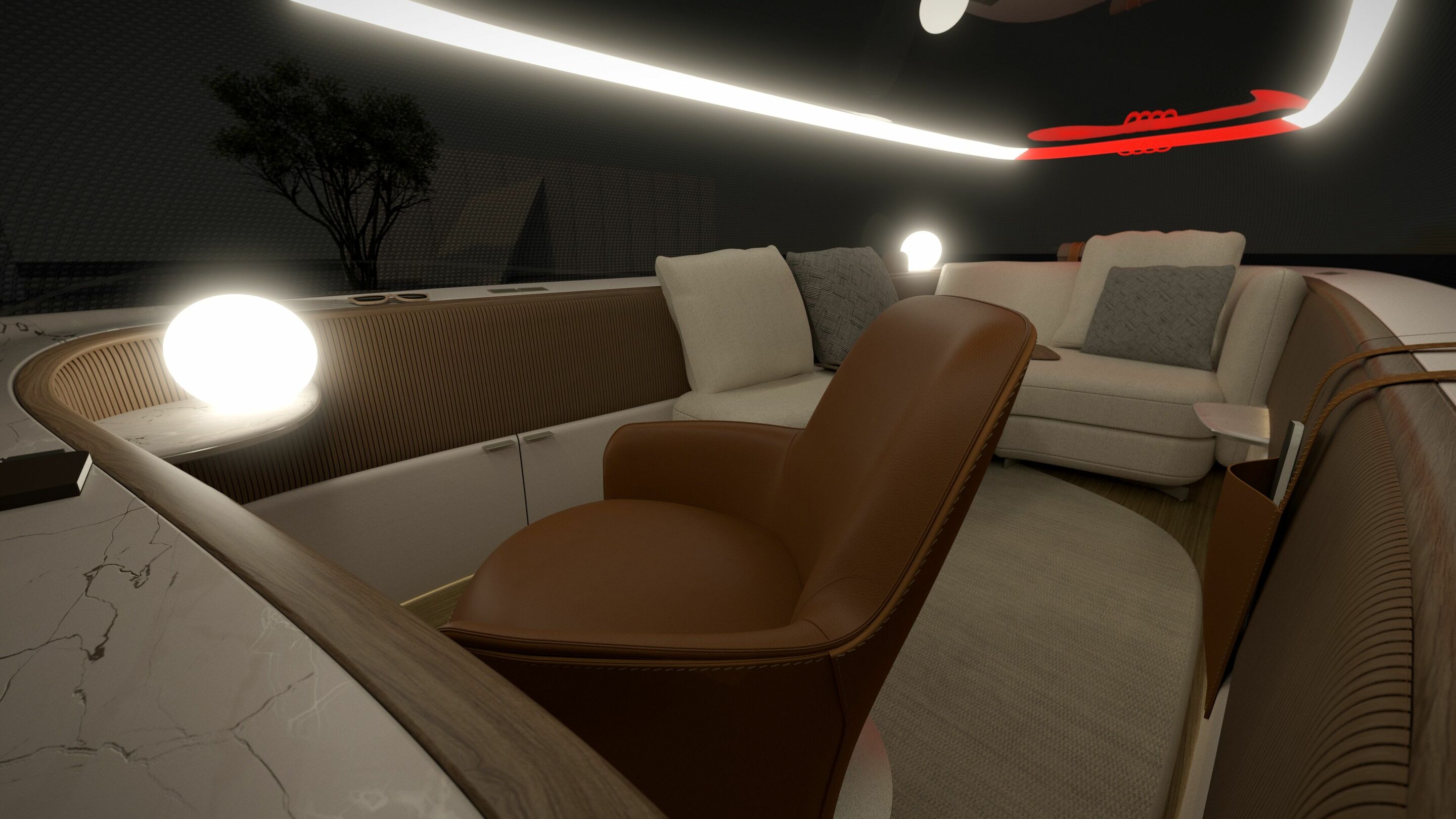Search
All search results for "marking light "
(971)
 DESIGN
DESIGN
The signature of the HD Matrix LED headlights visualizes the Sedan’s high level of technology. In the interior too, the new A6 reinforces the brand claim “Vorsprung durch Technik.” The A6 offers this with the black-panel design on the instrument panel, which creates a flowing transition between display and trim panel. This is the most modern interior in its class at present. The numerous trim variants allow wide-ranging characters to make their mark, from elegant through sporty. Exterior design The new Audi A6 is 4,939 meters (16.2 ft) long, 1,886 meters (6.2 ft) wide and just 1,457 meters (4.8 ft) high. The exterior stands out with its balanced proportions, visually shorter overhangs, athletically taut surfaces, sharply defined edges and striking lines. The Sedan’s Singleframe grille is wider and set down lower than on the predecessor model. It conveys an initial impression of technological expertise. Large, side air inlets with functional air curtains emphasize the Sedan’s sporty character; pronounced contours bring them to a finish lower down. Seen from the side too, the design of the A6 is tauter than before. A contour stretches across the top section of the sheet metal body, which starts as an edge in the hood and ends at the rear as a separating edge. The defining theme on the sides is the quattro sculpture, represented by striking muscles above the wheel arches – a throwback to the blisters of the Audi Ur-quattro. The arched shoulder line runs slightly lower across the doors. In the associated lower section, pronounced sideblades emphasize the dynamic side view. A characteristic domed arch dominates the roofline of the new Audi A6. The C-pillar is much flatter and the entire window line much more dynamic than before. The entire center of the car sits centrally between the axles. At the rear a chrome strip emphasizes the impression of width of the A6 and provides a link between the two rear lights.

The luggage compartment lid and the luggage compartment cover are electrically operated as standard. Sensor control for opening and closing the luggage compartment lid is available as an option, and a trailer towing hitch that can be unlocked electrically at the push of a button is also available upon request. Upon request, the RS 4 assists the driver in many situations: more than 30 driver assist systems underline the all-round characteristics of the high-performance Avant. The options are summarized in the “tour” and “city” packages. They include the adaptive cruise assist with stop & go function for automatic distance control, the intersection assist, the lane change warning, or the curb warning. RS 4 Avant customers can choose between eight colors. The Audi exclusive program also includes many more customized paint finishes, for example Nogaro blue, pearl effect. This color already marked the RS 2 Avant as the legendary forefather of all RS models back in 1994.
 History
History
In 1912, he founded an import company for French race cars from Courbevoie near Paris. During a visit to the site in 1913, a paperweight made of aluminum caught Bentley’s attention. According to Bentley’s idea, this light metal could be used to produce pistons instead of heavy cast iron, which was usual at the time. The idea became a reality – the Bentley piston was born. It was initially installed in World War I aircraft, and straight after the end of the war, in Bentley’s first vehicle, the Experimental Bentley No. 1. At the presentation in 1919, its creator said: “I wanted to build a fast car, a good car, the best in its class.” In the 1920s, Bentley’s 85-horsepower three-liter engines from the brand’s first factory in Cricklewood reached speeds of up to 80 miles per hour, around 129 km/h. They broke various speed and endurance records and became regular protagonists in the famous 24 Hours of Le Mans. In 1924, 1927, 1928, 1929, and 1930, the Bentley Boys won the trophy – and in 1929, they took all four first places. Rescued by the competition and a new start But then the global economic crisis and the harbingers of the next war soon almost drove the company into ruin. Rival Rolls-Royce took over Bentley in 1931 and moved production from Cricklewood to Derby. The factory in Crewe, Bentley’s main site to this day, was built in 1938. Before the war, it manufactured aircraft engines, but in 1946, the first car left the assembly hangar: the Mark V1. The R-Type Continental debuted in 1952, making it the world’s fastest four-seater at the time, with a top speed of 120 miles per hour (approx. 193 km/h).
 Facts and figures
Facts and figures
The new Audi A6 Sedan Operating system New MMI touch response operating and display concept: two touchscreens with tactile and acoustic feedback and intelligent text input Natural language voice control with onboard and online search Optional Audi virtual cockpit with Full HD resolution (1,920 x 720 pixels) and operation on the steering wheel; the head-up display is available as an option Personalization of around 400 functions for seven different profiles Infotainment and Audi connect MMI navigation standard, optionally available top-of-the-line version MMI navigation plus with 10.1-inch display Navigation with self-learning function on the basis of driver preferences; online route planning from HERE, free updates Audi connect key allows the driver to lock or unlock the vehicle and start the engine using a smartphone New Audi connect services Car-to-X functions: “Traffic sign information” and “Hazard information” New myAudi app to seamlessly connect smartphone and car Optional Bang & Olufsen Advanced Sound System with 3D sound also for the rear Other options available such as Audi phone box to make and receive calls conveniently Driver assistance systems Up to 39 driver assistance systems in three packages, including new systems such as crossing assist, efficiency assist and adaptive cruise assist Extensive sensor set with laser scanner, permanent fusion of all data in the central driver assistance controller (zFAS) Broad-based electrification V6 engines with 48V main electrical system All engines with mild-hybrid technology(MHEV, mild hybrid electric vehicle) via belt alternator starter and additional lithium-ion battery MHEV technology permits coasting with the combustion engine switched off, high recuperation power and extended start-stop operation, up to 0.7 liters fuel saving per 100 kilometers in customer use Linking of the MHEV system with vehicle sensors to boost efficiency and comfort Body and interior Spacious interior, 21 mm (0.8 in) longer than predecessor
 Sustainability
Sustainability
" Since 2013, an environmental guideline has marked the company's path to greater sustainability. In it, Ducati defines goals for the protection and preservation of the environment. In 2014, Ducati's environmental management system was certified in accordance with the international standard ISO 14001:2004. In 2022, Ducati adopted a new environmental and sustainability strategy that encompasses the company's environmental principles. In the recent past, Ducati has initiated numerous activities to minimize the impact of production on the environment. In 2016, the company installed a combined heat and power plant that supplies electricity, heat and cooling energy and significantly reduces CO2 emissions. The additional electricity required comes from renewable energy sources. Since the combined heat and power plant was commissioned, 11,973 tons of CO2 have been saved (as of December 31, 2024). In 2024 alone, Ducati saved 1,273 tons of CO2; the same amount would be generated by 2,508 flights from New York to Rome per person. In addition, the plant in Bologna uses fewer volatile organic compounds. Another important aspect is the reduction of waste: Ducati recycles 99 percent of the waste it produces (as of December 31, 2024). To support its sustainability strategy, the company also established a biomonitoring project of bees in 2016. Together with the Faculty of Veterinary Medicine at the University of Teramo, Ducati is using around 500,000 bees as bioindicators as part of an environmental monitoring program. With this project, Ducati is analyzing sources of pollution in the vicinity of the five beehives. As part of the project, specialists identified 278 potential pollutants, including heavy metals, furans, dioxins, and pesticides. Since 2020, Ducati has been participating in the “SU-EATABLE Life” project funded by the European Union to promote sustainable nutrition in the company canteen.
 Profile of location
Profile of location
The Audi Neckarsulm site has been manufacturing cars for over 100 years. Driven by innovative ideas, passion, and the pursuit of perfection, the location has developed from its beginnings as a knitting machine workshop to a modern car manufacturing site. AUDI AG is one of the largest employers in the Heilbronn-Franken economic region. 15,515 people work here for the Mobility of the Future. On an area of approximately one million square meters, the company produces a wide variety of cars: the A5, A6, A7, A8, and e-tron GT and all their variants. At the Böllinger Höfe industrial park near Heilbronn six kilometers away, AUDI AG adds approximately 300,000 more square meters to its Neckarsulm footprint. This is where Audi Sport GmbH has its headquarters, and is also the birthplace of the fully electric Audi e-tron GT. The Neckarsulm plant has the structures and abilities needed for both small-series and volume production. With a differentiated portfolio of highly efficient combustion-engine models, hybrid technology, and its all-electric model, the site is set for the future. Audi Forum Neckarsulm is making a mark in the region and far beyond it. Since its opening in May 2005, more than three million people have visited this brand experience center. Over more than 10,000 square meters, customers, visitors, and fans can discover the magic of the Audi brand, the company, and the Neckarsulm site. This is where new car owners come to pick up their Audi. Exhibits offer insight into the company’s history and its current product range and production. The Audi Exclusive Studio offers comprehensive services that go far beyond the design options of the standard series. The conference center provides business customers a space for meetings and creative workshops. The in-house restaurant Nuvolari offers high-end dining. The Audi Forum is a brand experience world and also the gateway to the site. From here, experience tours through the plant begin.
 Motorsport history
Motorsport history
Sportiness, advanced technology and emotional design are the foundations for the success of the Audi brand. Valuable genes for this come from motor racing.
Entering the premier class of motorsport
Audi is facing what is arguably its biggest challenge in motorsport. From the 2026 season, the brand will be competing in the FIA Formula 1 World Championship with its own works team. Development of the drive unit (“Power Unit”) is in full swing at the Neuburg an der Donau site. Thanks to open competition, Formula 1 serves as a technology driver for both electromobility and sustainable e-fuels. Photo: Showcar with Audi F1 launch livery
Milestones
Success with electric drive concepts
Sustainability does not only play an important role in the premier class of motorsport. The company began electrifying its motorsport program in endurance racing in 2012. With the first victory of a hybrid racing car at the Le Mans 24 Hours, Audi achieved a pioneering feat at the world’s most important endurance race in 2012. The Audi R18 e-tron quattro remained unbeaten three times in a row at Le Mans in 2012, 2013 and 2014. Many other innovations such as the Audi laser light complement the pioneering technical achievements. Drivers and manufacturers titles with the hybrid sports car in the 2012 and 2013 FIA World Endurance Championship (WEC) complete the Audi sports car era, which ended in 2016. Following the LMP program with the R18 hybrid sports car, Audi was the first German car manufacturer to compete in the all-electric Formula E racing series in the 2017/2018 season. With four victories and a total of eleven podium finishes, Audi Sport ABT Schaeffler clinched the team championship after twelve races. Things continued to go electric after that: the brand with the four rings competed in the famous Dakar Rally from 2022 with an innovative prototype.
 COMFORT AND CONVENIENCE
COMFORT AND CONVENIENCE
Driver assistance systems The assistance systems make driving even more convenient, effortless and safe. They are bundled into the “Tour,” “City” and “Park” packages. A highlight in the “Tour” assist package is the adaptive cruise assist (ACA). It uses the Mild Hybrid Technologyand enhances this with a lane guidance function over the entire speed range and the traffic jam assist. As a supplement, Audi offers the bottleneck assist, which makes steering corrections in roadworks if the car gets too close to the edge of the road. The bottleneck assist also automatically maintains a safe distance to vehicles which invade the car’s lane, and automatically continues the overtaking maneuver once the lane is free again. An ideal upgrade for the adaptive cruise assist is also the efficiency assist. This brakes and accelerates the vehicle predictively by analyzing Car-to-X information, sensor information and navigation data as well as traffic signs. Other modules in the Tour package include turn assist, collision avoidance assist, high-beam assist, camera-based traffic sign recognition and the Audi pre sense front safety system. Audi pre sense basic comes standard in all Audi A6 sedans; another highlight, crossing assist is included in the “City” assist package. If the mid-range radars at the vehicle’s corners, which can look roughly 75 meters (246.1 ft) ahead, detect crossing traffic in front of the car, the system warns the driver; if necessary it applies the brakes. Cross traffic assist rear, the exit warning and the lane change warning are based on the signals from the rear mid-range radars. The Audi pre sense rear and Audi pre sense front safety systems are also part of the assist package. Behind the new assistance systems in the Audi A6 lies a portfolio of sensors, which supplement each other in their particular characteristics and are designed redundantly to provide maximum system safety. The major innovation in this respect is the laser scanner.







